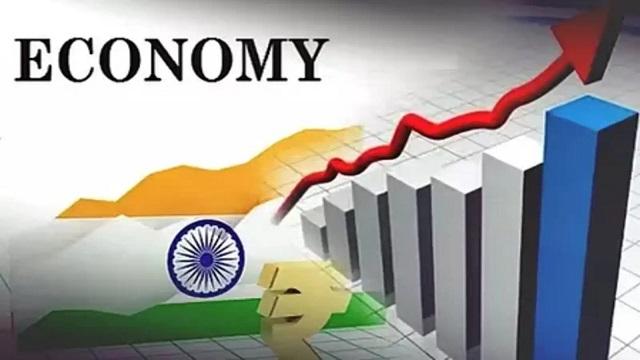
The echoes of a remarkable achievement resonate across our beloved India, marking a golden chapter in global economic history. By May 2025, our nation has surpassed Japan, emerging as the world’s fourth largest economy! This isn’t just a number; it’s a testament to our nation’s progress, the tireless efforts of its people, and the robust policies of the Modi government. NITI Aayog CEO B.V.R. Subrahmanyam himself announced this momentous news, citing data from the International Monetary Fund.
Looking at the current global economic landscape, India stands proudly in the fourth position, trailing only the United States, China, and Germany. From our previous fifth position, we have leapfrogged Japan, with our GDP expanding from approximately $4.19 trillion (around ₹35,600 crores) to $4.39 trillion. This progression clearly demonstrates India’s rapid advancement and its powerful emergence as a global economic force.
The Journey Behind This Success-Turning Points and Transformations:
At independence, India was primarily an agrarian, low-income economy. Planned economic policies, the dominance of public sector undertakings, and the “License Raj” somewhat constrained growth in the initial decades. Notably, over the past decade, we have consistently registered high growth rates. Several factors have contributed to this astounding economic surge, which we will now explore in detail.
Services Sector -The Backbone of the Economy:
The services sector has been the backbone of India’s economy. Information technology, IT-enabled services, financial services, and telecommunications have witnessed phenomenal growth. Our IT professionals are making their mark globally. Furthermore, with innovations like the Unified Payments Interface (UPI), we have become global leaders in digital payments. Fintech startups, affordable data prices, and an extensive mobile network have laid a strong foundation for the digital economy. Other services such as tourism, healthcare, and education are also experiencing significant revitalization.
Manufacturing and Agriculture – A Renewed Vigor:
Not limited to just the services sector, initiatives like “Make in India” and “Aatmanirbhar Bharat” are fostering domestic manufacturing. Production-linked incentive (PLI) schemes have substantially boosted domestic production in key sectors such as mobile phones, pharmaceuticals, automobiles, and electronics. This has not only reduced our reliance on imports but also positioned India as a crucial component of the global supply chain. A significant portion of our population still depends on agriculture, a sector vital for the nation’s food security. Efforts are underway to increase farmers’ incomes through technological integration, improved irrigation, and crop diversification. There are also immense opportunities for growth in the food processing industry.
Demographic Dividend and Investment Attraction:
With a population exceeding 1.4 billion, growing urbanization, and rising incomes, India has emerged as a vast consumer market. The aspirations and consumption patterns of our largely young population are driving economic growth—this is
India’s demographic dividend. A stable economic environment, government reforms, and such a large market have consistently attracted foreign direct investments to India.
Infrastructure and Digital Public Infrastructure:
The government’s substantial expenditure on developing infrastructure like roads, railways, ports, and airports is also creating a favorable environment for private investments. Digital public infrastructure (India Stack) such as Aadhaar and DigiLocker has streamlined economic activities, enhanced transparency, and promoted financial inclusion. With internet access expanding even to rural areas, the demand for digital services is on the rise.
Policy Reforms and Political Stability:
The Goods and Services Tax (GST) has unified the indirect tax system, contributing to the “one nation, one market” goal. Reforms like the Insolvency and Bankruptcy Code have improved lending culture. Our progress in the “Ease of Doing Business” ranking has simplified commercial processes. The sustained political stability over the past few years has also greatly aided the implementation of economic plans and reforms. The confluence of all these factors has positioned India at this level on the global economic stage.
The Future Goal- Surpassing Germany for the Third Spot:
Our progress doesn’t stop here! India aims to surpass Germany within the next 2.5 to 3 years to become the world’s third largest economy. According to IMF projections, India is expected to remain the fastest-growing major economy in the coming years. Projections indicate a growth rate of 6.2% in 2025 and 6.3% in 2026. We were able to overtake Japan primarily due to its economy’s stagnation for decades and its aging population. Germany’s economy largely relies on manufacturing and exports. With the strength of our domestic market, the growth of the services sector, and the strengthening of our manufacturing sector, we can achieve this ambitious goal.
Steps to Secure the Third Rank:
Income inequality and poverty remain significant challenges. It is crucial that the fruits of economic growth reach all sections of society equally. Unemployment, especially among the youth, continues to be a challenge. There is a need to create sufficient quality employment opportunities for the growing workforce. The agricultural sector still grapples with issues like low productivity and the impact of climate change; it needs further strengthening. Despite development, infrastructure needs to be further improved to meet growing demands. Controlling inflation and reducing the fiscal deficit are key to economic stability. Furthermore, despite high GDP growth, India’s ranking in the Human Development Index needs improvement. Disparities in education, health, and living standards persist. Improving these indicators is essential to achieve inclusive growth. Equally important are environmental protection measures, ensuring economic growth doesn’t harm the environment, transitioning to renewable energy sources, and mitigating the effects of climate change.
Towards the Vision of a Developed India:
India’s emergence as the world’s fourth largest economy is undoubtedly a historic milestone. It is a testament to the nation’s immense potential, the unwavering dedication of its people, and the positive impact of government policies. By strengthening economically, our voice and influence are growing on international platforms such as the G20, Quad, and BRICS. We are taking steps towards playing the role of a “Vishwa Guru” (global teacher). Our goal is to become a “Viksit Bharat” (developed nation) by 2047, when India completes 100 years of independence. Only by making this progress inclusive and sustainable, and by effectively addressing the challenges, can India unleash its full potential and establish itself as a leading power on the world stage. Let us hope that we overcome these challenges and ascend to even greater heights. This is our collective dream, our collective effort.











